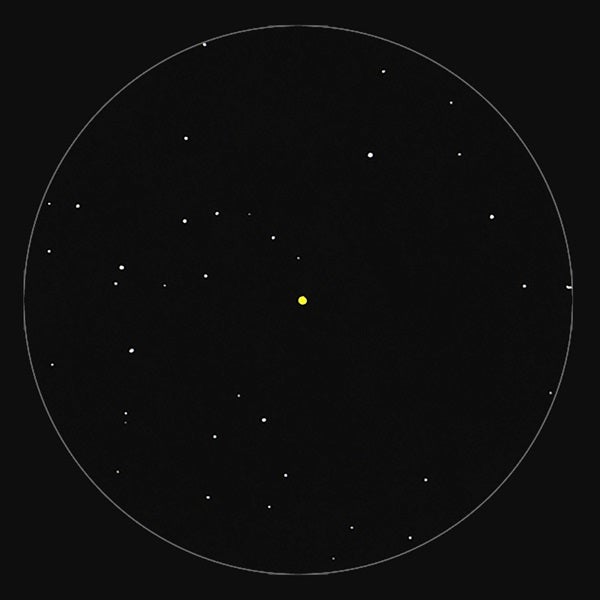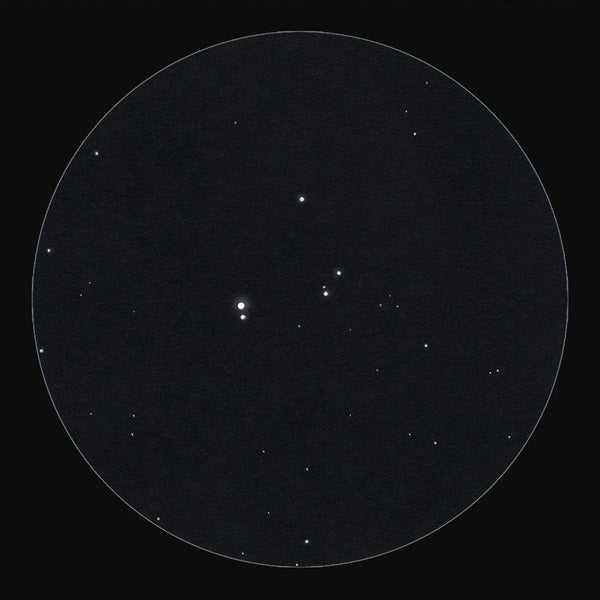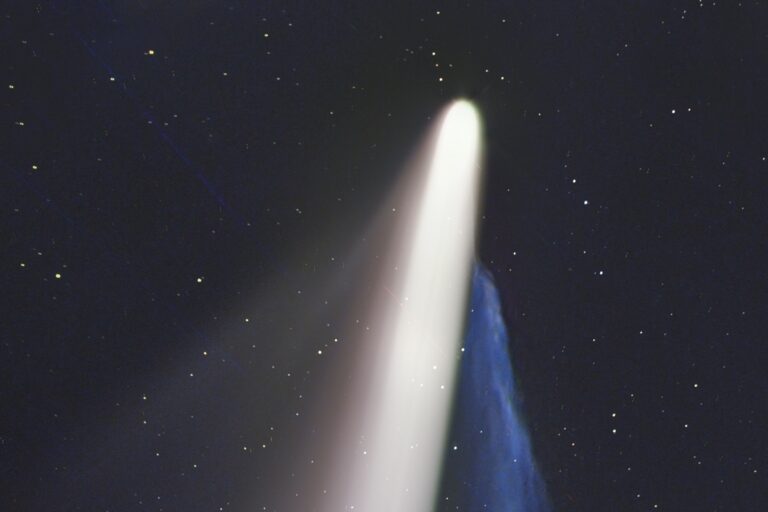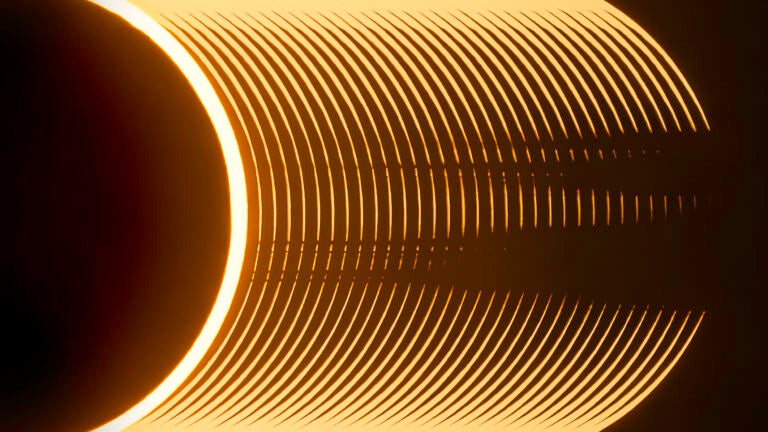Simply put, a variable star is one that changes brightness by any means. Backyard observers can estimate a variable star’s apparent magnitude as it rises and falls over the course of time and then plot the results as a light curve. Sketching the observations can help improve an observer’s ability to notice subtle variances in stellar magnitudes.
If you’re new to variable star observing, Delta (δ) Cephei makes a nice beginner’s choice. It’s the prototype of the Delta Cepheid class of variable stars that, due to helium instabilities in their inner layers, pulsate with periods proportional to their luminosity. This means that their intrinsic brightnesses — and therefore distances — can be calculated directly from the length of their pulsation cycles, making them ideal cosmic measuring sticks.
Located near the king’s head in the constellation Cepheus, Delta Cep forms a distinct triangle with Zeta (ζ) Cephei and Epsilon (ε) Cephei. Telescopically, the variable star has a pale yellow hue with a 7th-magnitude bluish companion 41″ farther south. It takes about 1½ days for Delta Cep to rise to magnitude 3.5 in brightness before it slowly fades back to 4.4 for the remainder of its 5.37-day variable period. You can estimate its brightness with either the naked eye or with binoculars by using Zeta Cep (magnitude 3.6) and Epsilon Cep (magnitude 4.2) for comparison. If you can, record your observations nightly over the five-day time span.
While sketching the star field, be extra diligent when depicting star magnitudes. Reassess the stars in your drawing often, and adjust their magnitudes as needed from the brightest to the faintest. Be sure to include the date and time (accurate to the minute) of your estimation as well as a thoroughly written record of your observation.
Interested in contributing to science? The more information researchers can gather about the long-term behavior of variable stars, the better understanding they gain of stellar properties and cosmic evolution. With more than 150,000 variable stars cataloged so far, this is a growing branch of amateur astronomy. Professional astronomers encourage backyard observers to submit their variable star observations to entities like the American Association of Variable Star Observers (AAVSO) so that researchers can access the collected data.
Be sure to choose variable stars that are suited for your observing location, equipment, and schedule. Then settle in for a long-lasting, highly worthwhile project.












